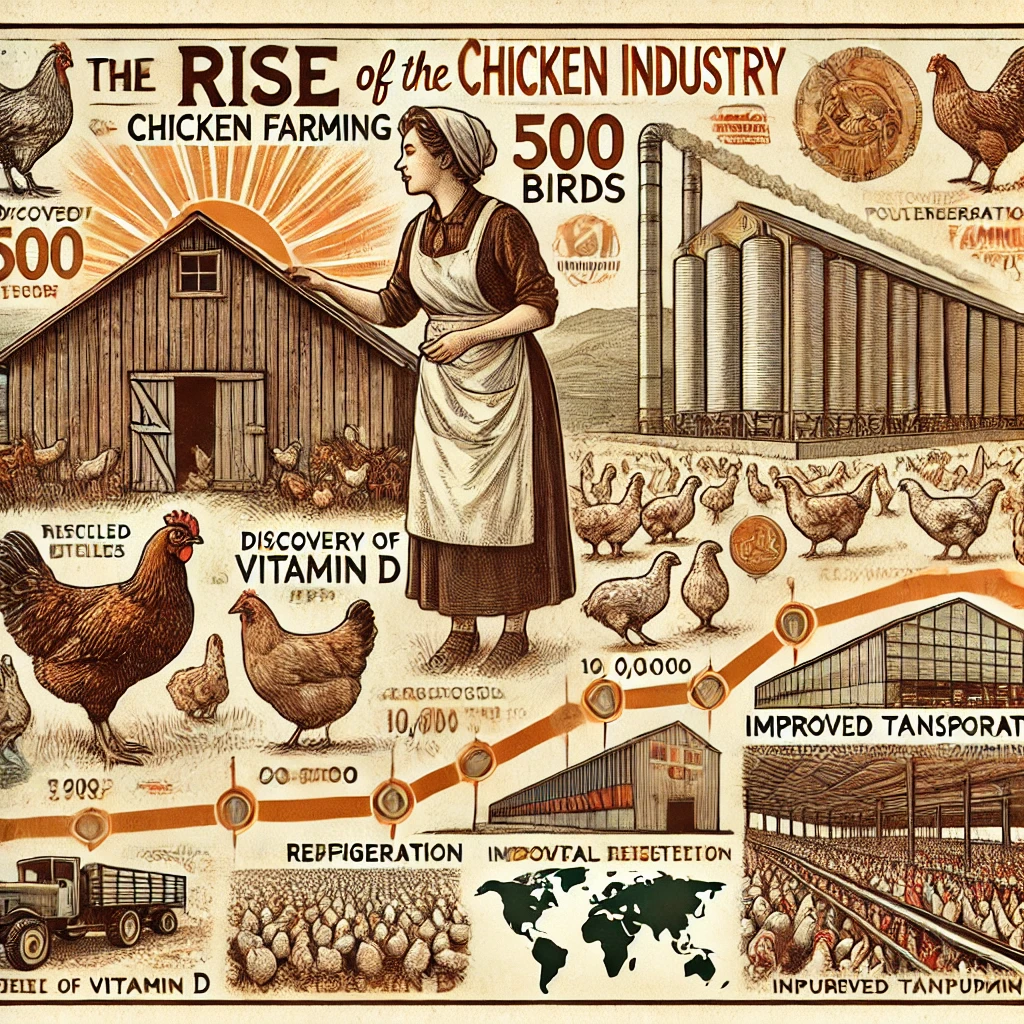Chicken has become an undeniable staple on dinner tables worldwide. Today, the world consumes an astonishing 75 billion chickens each year—an average of 15 per person (Vox). But have you ever wondered how this humble bird went from a backyard animal raised for eggs to the most popular source of protein on the planet? Surprisingly, the story isn’t just about science, economics, or changing diets—it all started with one woman’s mistake.
A Century Ago: When Chicken Was a Luxury
A little over a century ago, chicken was far from the everyday protein it is today. In the early 1900s, it was a special-occasion dish, often costing more per pound than beef (Smithsonian). People primarily raised chickens for eggs, with meat being a byproduct when the hens stopped laying.
During World War II, however, the demand for alternative proteins surged due to shortages of beef and pork, giving poultry a boost (Pitco). But the real game-changer came in 1923, thanks to an accidental order that would unknowingly revolutionize the industry.

Cecile Steele’s Happy Accident
Cecile Steele, a farmer and homemaker from Ocean View, Delaware, had ordered 50 chicks for her small egg-producing flock. But when the local hatchery mistakenly delivered 500 instead, she decided to raise them for meat rather than returning the surplus. To her surprise, the venture was not only successful but highly profitable. Encouraged by her earnings, Steele expanded her operation and, within a few years, was raising 10,000 chickens—a number unheard of at the time (Vox).
Her success spread quickly, inspiring other farmers to shift their focus from egg-laying hens to meat production. By the late 1920s, entire farms were being dedicated to raising broiler chickens, and the poultry industry as we know it today was born.
Technology and Science Pave the Way
While Steele’s accidental experiment sparked the trend, innovations in nutrition and farming techniques turned chicken into an affordable and accessible protein for the masses. The discovery of vitamin D in 1922 allowed farmers to keep chickens indoors year-round without risking disease, while improvements in breeding and farming efficiency led to larger, faster-growing birds (National Chicken Council). By the 1950s and 60s, the cost of chicken had dropped significantly, making it a regular part of the American diet.
Fast forward to today, and a single industrial farm can house 40,000+ chickens per barn—a far cry from Steele’s 256-square-foot operation. Thanks to advancements in transportation and refrigeration, chicken isn’t just America’s favorite meat—it’s the world’s.
A Legacy That Lives On
Though Cecile Steele and her husband tragically passed away in a boating accident in 1940, her legacy lives on in the form of an industry that feeds billions.
Today, chicken accounts for nearly 45% of all meat consumed in the United States, having surpassed both beef and pork in popularity (USDA). Worldwide, chicken consumption is expected to keep climbing, with projections estimating a staggering 160 million metric tons by 2033 (Statista).
The Takeaway
It’s fascinating how a simple mistake—a miscount at a hatchery—ended up shaping the way the world eats. Steele’s story is a reminder that some of the biggest successes in history come from unexpected places. Who knew that one woman’s decision to make the best of an accidental delivery would change the way the entire world consumes protein?
So, the next time you enjoy a plate of crispy fried chicken, a grilled chicken salad, or a comforting bowl of chicken soup, remember that behind this everyday meal lies a story of luck, innovation, and one determined farmer who saw an opportunity where others might have seen a problem.
For more interesting posts, please visit: Blog
Leave a Reply